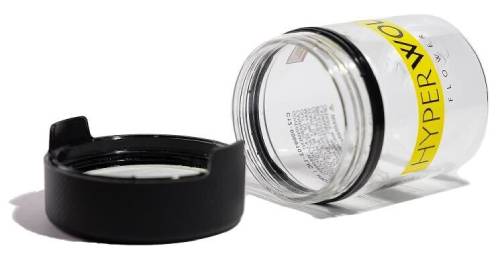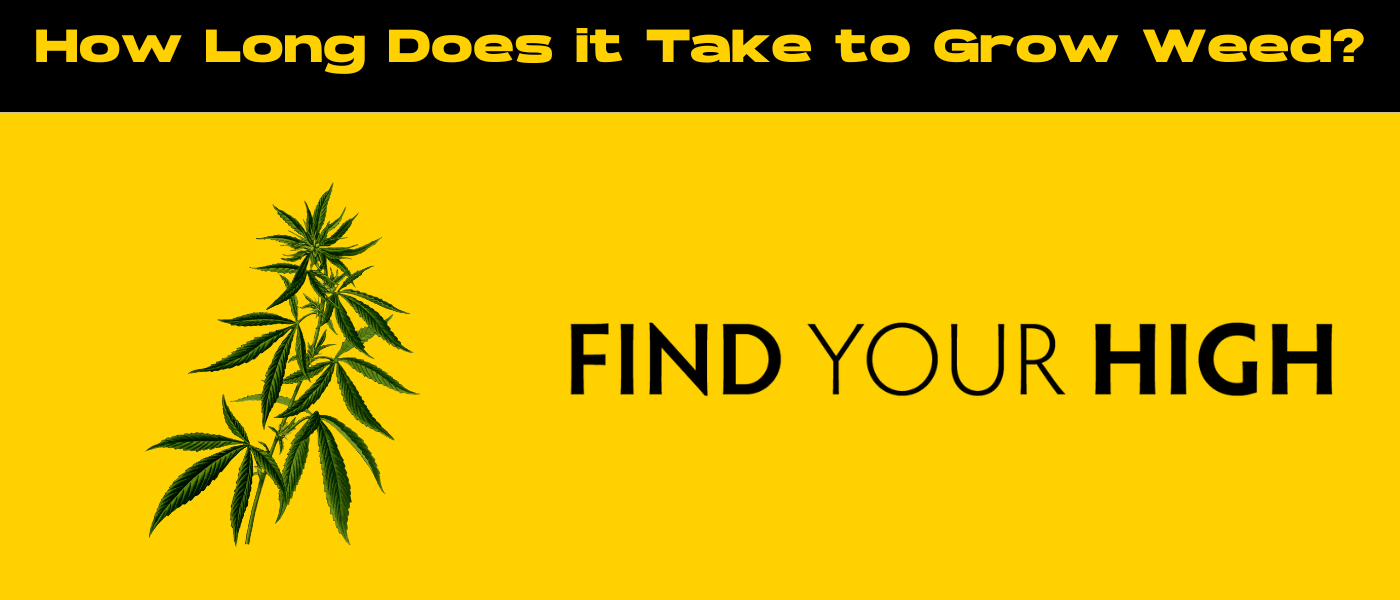Growing cannabis is a journey—one that combines patience, knowledge, and a bit of green-thumbed finesse. Whether you’re a first-time grower or a seasoned cultivator brushing up on your knowledge, the question at the center of it all remains the same: how long does it take to grow cannabis? The answer, while seemingly simple, unravels into a rich tapestry of timelines, plant stages, environmental conditions, and genetic variables.
In this guide, we’ll take a deep dive into every phase of cannabis growth—from seed to harvest and beyond. We’ll break down average grow times, detail each stage, and look at what speeds up (or slows down) your cultivation. By the time you’re done reading, you’ll be equipped to plan your grow with confidence, regardless of your setup. So, roll up your sleeves (and maybe something else, too), and let’s get growing.
The Short Answer: Typical Cannabis Growth Timeline
For those looking for a straight-to-the-point answer, here it is: Cannabis typically takes anywhere from 3 to 7 months to grow from seed to harvest. But like most things in life (and especially in gardening), the devil is in the details.
This timeframe includes all stages—germination, seedling, vegetative, flowering, and the final steps of drying and curing. Autoflowering strains can finish up in as little as 8 weeks, while slow-growing photoperiod Sativas might take closer to 6 months or more. Your final grow time will largely depend on factors like strain, environment, and your cultivation method (indoor vs. outdoor, soil vs. hydro, etc.).

Understanding the Cannabis Growth Stages
To understand how long it takes to grow cannabis, you first need to understand the distinct stages your marijuana plant goes through. Each stage has its own timeline, challenges, and unique care needs. Let’s walk through each of them in detail.
Germination Stage: Waking the Seed (1–7 days)
The cannabis life cycle begins in earnest during the germination stage. This is the moment when your dormant seed cracks open and begins to sprout—marking the beginning of a brand-new plant.
Most growers use the tried-and-true paper towel method to germinate cannabis seeds. Some prefer the soak-in-water approach or planting directly in soil, but all methods aim to trigger the taproot. With optimal conditions (darkness, warmth, moisture), germination typically takes 1 to 7 days.
Be patient here—rushing things can ruin viability. If a seed doesn’t pop by day 10, it’s probably a dud. Once that little white root emerges, it’s time to plant it carefully into your growing medium.
Seedling Stage: The Cannabis Baby Phase (2–3 weeks)
Once germinated, the seedling emerges, showing its first pair of round cotyledon leaves. Over the next two to three weeks, the plant will start developing its characteristic serrated leaves, typically growing 4–6 true leaf sets during this stage.
This is a sensitive time. Your seedling needs:
- 18–24 hours of light per day (for indoor grows)
- High humidity (~65–70%)
- Gentle air circulation
- Light watering (overwatering is a common mistake)
A weak or stunted seedling often leads to a weak plant, so treat your babies with care. After about 2–3 weeks, your cannabis is ready for the vegetative phase.
Vegetative Stage: Building the Foundation (3–8 weeks)
The vegetative stage is where your cannabis plant focuses on growing bigger, bushier, and stronger. This phase can last as little as 3 weeks or as long as 2 months, depending on strain type, training techniques, and your goals.
During this period, the plant focuses on:
- Growing more leaves and branches
- Strengthening the stem
- Developing a broad, sturdy structure to support future buds
Indoor growers often use an 18/6 light cycle (18 hours light, 6 hours dark), while outdoor growers rely on natural daylight. Now is the time to introduce nitrogen-rich nutrients, which fuel leafy growth.
Want bigger yields? Let your plant veg longer. Want to harvest sooner? Flip it to flowering after just a few weeks. You’re in control.
Flowering Stage: Bud Formation Begins (6–12 weeks)
This is where the magic happens. During the flowering stage, your plant shifts energy from leaf production to bud development. You’ll start to see pistils (those little white hairs) and maybe even a fragrant hint of what’s to come.
For photoperiod strains, this phase is triggered by switching to a 12/12 light cycle (12 hours of light, 12 hours of uninterrupted darkness). Autoflowers will begin flowering automatically, usually around week 3–5.
Flowering length depends heavily on the strain:
- Indicas: 6–8 weeks
- Hybrids: 8–10 weeks
- Sativas: 10–12+ weeks
It’s important to avoid light leaks during flowering, as this can cause stress or hermaphroditism. Monitor trichomes and pistils as harvest nears to determine ripeness.
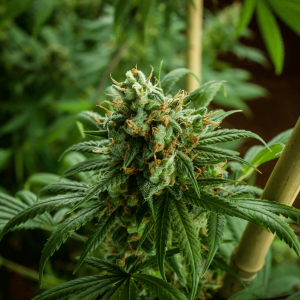
Harvesting: Time to Trim (1–3 days)
When those buds have reached full maturity—typically when trichomes turn from clear to cloudy or amber—it’s harvest time. This usually occurs between weeks 8 and 12 of flowering, depending on strain and conditions.
You’ll need:
- Sharp trimming scissors
- Gloves
- A clean, dry environment
Some growers do a “wet trim” right after harvest, while others prefer to trim dry after a few days of drying. Either way, your cannabis plants are now entering the post-harvest phase.
Drying and Curing: The Final Stretch (3–8 weeks)
Don’t rush this part. Drying and curing are crucial for flavor, smoothness, and potency. Done wrong, you could ruin months of hard work.
Drying usually takes 7–10 days in a dark, well-ventilated room with 50–60% humidity and temps around 60–70°F. After that, the buds go into glass jars for curing, where they sit for 2–8 weeks, burped daily for the first 2 weeks to release moisture and gases.
This final step boosts terpene profile, enhances THC, and ensures smooth smoke. Patience really pays off here.
What Affects the Cannabis Growth Timeline?
Many variables influence how long it takes to grow cannabis. Understanding these can help you plan smarter and avoid delays.
Genetics and Strain Type
Some strains are born sprinters; others are marathoners. One of the biggest determining factors in your cannabis timeline is genetics.
- Indicas: Shorter, bushier, faster to flower (~6–8 weeks)
- Sativas: Taller, slower to mature (~10–14 weeks)
- Hybrids: Somewhere in between
- Autoflowers: The fastest option, often from seed to harvest in 8–10 weeks
If speed is your priority, autoflowers or fast-finishing Indicas are the way to go. But if you’re chasing unique flavors or effects, don’t be afraid of a longer commitment.
Grow Method: Indoor vs. Outdoor
Where you grow has a huge impact on your timeline.
- Indoor Grows: More control over light and environment = shorter grow times. You can harvest multiple times a year.
- Outdoor Grows: Dependent on seasons. Typically takes longer, especially with photoperiod strains that rely on natural daylight changes.
- Greenhouses: A nice hybrid option—controlled environment with natural light.
Outdoor grows often start in spring and harvest in fall, while indoor growing can begin any time of year.
Lighting and Photoperiod Control
Lighting is everything in cannabis cultivation. The amount and quality of light directly affect how fast your plant grows.
In veg, more light = faster growth. During flowering, a proper 12/12 schedule ensures timely bud development. Poor lighting causes slow, leggy cannabis plants, lower yields, and longer timelines.
For indoor cannabis plants, high-quality LEDs or HPS lights are worth the investment if speed and efficiency matter.

Growing Medium: Soil vs. Hydroponics vs. Coco
Your growing medium plays a surprisingly important role in overall speed.
- Soil: Easiest and most forgiving, but usually slower growth
- Hydroponics: Faster nutrient absorption = faster growth (but higher risk of mistakes)
- Coco Coir: A great middle ground—fast like hydro but behaves more like soil
Hydroponic systems can shave off weeks, but only if you’re confident managing water chemistry and nutrient delivery.
Nutrients and Feeding Schedules
Like humans, cannabis plants need the right nutrients at the right time. A well-fed plant grows faster and healthier.
In veg, focus on nitrogen-heavy nutrients. In flower, pivot to phosphorus and potassium. Always feed based on your plant’s stage—not a one-size-fits-all schedule.
Underfeeding = slow, stunted growth. Overfeeding = nutrient burn. Both can extend your grow by weeks.
Environmental Factors: Humidity, Temperature, and Airflow
Your plant’s environment is just as important as light or nutrients. Bad conditions can stress your plant and drastically slow progress.
Here’s what you should aim for:
- Seedling Stage: 65–70% RH, 70–80°F
- Vegetative Stage: 40–70% RH, 70–85°F
- Flowering Stage: 40–50% RH, 65–80°F
- Airflow: Constant, gentle breeze to strengthen stems and prevent mold
Dialing in these parameters leads to a healthier plant that grows on schedule.
Strain-Specific Timelines: Fast vs. Slow Growers
Let’s look at real-world examples of fast and slow cannabis strains.
Fast-Growing Strains to Try
If speed is what you’re after, check out:
- Northern Lights Auto – ~8–10 weeks
- White Widow Auto – ~9 weeks
- Fast Buds – true to the name, some finish in just 8 weeks
- Blue Dream Auto – reliable, quick, and flavorful
These are excellent choices for first-time growers or those who want a quick turnaround with minimal training.
Slow-Growing But Potent Strains
Slower strains often come with bigger yields or more complex terpene profiles, but they demand more time and attention.
Examples include:
- Haze – 12–14 weeks flowering
- Amnesia – long grow but high potency
- Chocolate Thai – legendary but slow
- Malawi – pure landrace Sativa, incredible but takes time
If you’ve got patience and space, these are well worth the wait.
Planning & Scheduling Your Grow
Successful growers plan ahead. Knowing your timelines helps avoid delays and disappointment.
Mapping Out Your Grow Calendar
From seed to curing, lay out each phase on a calendar. Many growers keep a grow journal or use apps to track lighting schedules, feedings, training, and stage progression.
Mapping your schedule helps you plan around vacations, electricity costs, or seasonal changes—especially if you’re juggling more than one grow cycle.
How Many Harvests Per Year Can You Get?
- Growing Cannabis Indoors: Up to 4 full harvests per year, especially with autoflowers or a perpetual grow setup.
- Growing Cannabis Outdoors: Typically just one harvest/year, unless you’re in a tropical climate.
- Autoflowers: Can fit multiple grows in a single season outdoors.
Staggered planting (starting new cannabis plants every few weeks) keeps a continuous cycle going indoors.
When to Start Growing (Best Times of Year)
For outdoor grows, start seeds in early spring after the last frost. Transplant outside when temps are stable. Harvest usually lands in late September to early November, depending on strain and region.
For indoor growers, any time is go time—but be mindful of:
- Summer temps and AC costs
- Winter humidity issues
- Your own schedule and availability
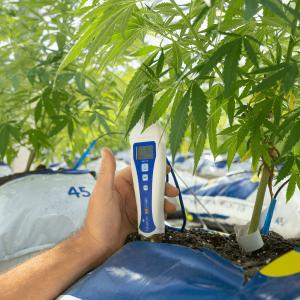
Tips to Grow Faster Without Sacrificing Quality
If you’re aiming to cut time without compromising on yield or potency, the good news is there are smart strategies that can help you do just that. These aren’t shortcuts, but rather techniques that optimize your grow to its fullest potential.
Use Autoflowers for Speed
Autoflowering strains are your best friend when speed is a top priority. Unlike photoperiod strains, autoflowers don’t require a light cycle change to start flowering—they flower automatically after a few weeks of vegetative growth, regardless of light exposure.
Most autoflowers go from seed to harvest in as little as 8–10 weeks. They also tend to be more compact, making them ideal for small grow tents, stealth grows, or growers looking to squeeze multiple harvests into one season.
Pros of autoflowers:
- Quick turnaround time
- Easy to grow (great for beginners)
- Less sensitive to light leaks
- Can produce 2–3 outdoor harvests in one summer season
The trade-off? They often yield slightly less than photoperiods and allow less time for plant training. But for many, the speed advantage outweighs the downsides.
Training Techniques to Speed Veg Growth
Training your plants doesn’t just maximize yield—it can also optimize your veg time. By using training techniques, you encourage horizontal growth and expose more bud sites to light, which accelerates development and helps your plant reach flowering readiness faster.
Popular training methods:
- Low-Stress Training (LST): Bending branches gently to open up light exposure.
- Topping/FIMing: Cutting the main stem to encourage bushier growth.
- ScrOG (Screen of Green): Training branches along a screen for an even canopy.
When done right, training can reduce your time in veg without sacrificing size or structure. It also leads to more uniform flower development during the bloom phase.
Choosing the Right Lighting for Speed
Lighting quality and intensity have a direct impact on plant metabolism. If you’re using low-wattage, outdated lights, your plant is likely crawling through its grow cycle. Investing in the right lights pays off in time saved.
LED grow lights are now the gold standard—they run cooler, use less electricity, and can be dialed in with full-spectrum coverage. A proper PPFD (Photosynthetic Photon Flux Density) level during veg (400–600 μmol/m²/s) and flowering (600–900+) is ideal.
Light positioning also matters—keep your lights close enough for intensity but far enough to avoid burning. Using reflectors or grow tents with reflective walls can also boost efficiency.
Cloning vs. Starting from Seed
Want to skip the germination and seedling phase entirely? Start with clones instead of seeds.
Clones are cuttings taken from a mature “mother plant,” and they’re already genetically stable and ready to grow. You can shave 2–3 weeks off your total grow time by using clones, as they bypass the early development stage.
Benefits of clones:
- Faster growth
- Guaranteed genetics
- Uniformity across cannabis plants
However, they’re not without downsides—clones can carry pests or diseases from the mother, and their root systems are often less robust than seed-grown cannabis plants. Still, for experienced growers or commercial operations, they’re a time-efficient choice.
Common Mistakes That Slow Down Cannabis Growth
Even with the best intentions, it’s easy to make a few mistakes that quietly sabotage your grow timeline. These pitfalls are avoidable, and knowing what to watch out for can save you weeks of frustration.
Overwatering and Underwatering
Improper watering is one of the most common culprits behind sluggish plant growth. Too much water suffocates the roots, while too little dries them out—either way, your plant’s development takes a serious hit.
Signs of overwatering:
- Drooping leaves
- Yellowing
- Moldy soil or root rot
Signs of underwatering:
- Wilted, crispy leaves
- Dry, cracked soil
- Slow leaf development
To avoid these issues, use well-draining soil and pots with drainage holes. Check moisture levels regularly, and adjust watering based on your environment and pot size. Once your roots are thriving, your plant will grow at its natural pace.
Poor Light Management
Light mismanagement is a silent time thief. Weak lights, poor schedules, and inconsistent photoperiods can significantly delay your plant’s progress—especially during the flowering stage.
Common light issues:
- Using household bulbs instead of grow lights
- Inconsistent light schedules
- Light leaks during the dark period (which can stress flowering cannabis plants and cause hermies)
If you’re growing weed indoors, consider putting your lights on a timer. Double-check your grow space for potential light leaks and stick to your lighting schedule religiously—your cannabis plants depend on it.
Ignoring pH and Nutrient Lockout
Your plant might have access to nutrients—but if the pH is off, it won’t be able to absorb them. This leads to nutrient lockout, where the roots can’t take in vital minerals, stunting your plant’s development.
Ideal pH ranges:
- Soil: 6.0–7.0
- Hydro/Coco: 5.5–6.5
If your pH falls outside of these ranges, adjust using pH up/down solutions. Test regularly with a digital meter or pH drops. Once your pH is dialed in, your plant can grow efficiently and reach harvest on schedule.
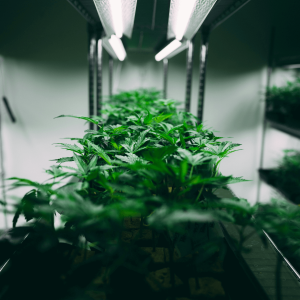
Conclusion: Patience Pays Off
Growing cannabis is a rewarding endeavor—one that asks for patience, attention to detail, and a bit of trial and error. While the typical timeline ranges from 3 to 7 months, your exact grow time depends on genetics, growing method, environment, and personal choices along the way.
If you’re looking to harvest quickly, autoflowers, clones, and hydroponic setups can get you there faster. But if you’re chasing flavor, yield, and full-spectrum cannabinoid profiles, a longer grow with photoperiod strains might be your best bet.
Whatever your timeline looks like, the most important thing is to enjoy the journey. Each grow is a learning experience, and the payoff—sticky, fragrant buds you grew with your own hands—is always worth the wait.
Quick Recap: Cannabis Growth Timeline by Stage
- Germination: 1–7 days
- Seedling: 2–3 weeks
- Vegetative: 3–8 weeks
- Flowering: 6–12 weeks
- Drying/Curing: 3–8 weeks
How Long Does it Take to Grow Cannabis: Final Tips for Staying on Track
- Plan your grow calendar before you start
- Choose strains that align with your goals (speed, yield, flavor)
- Control your environment—especially light, humidity, and temp
- Avoid common mistakes like overwatering or ignoring pH
- Keep a journal—it helps track your success and learn from errors
Whether you’re growing your very first plant or your fiftieth, remember: cannabis cultivation is more than just a process—it’s a practice. One that rewards patience, curiosity, and a little love for the plant. Keep growing, keep learning, and enjoy every sticky-fingered step along the way.
Frequently Asked Questions
1. How long should cannabis take to grow?
On average, cannabis takes anywhere from 3.5 to 6 months to grow from seed to harvest, depending on the strain, growing method, and environment. Autoflowering strains can be ready in as little as 8–12 weeks, while photoperiod plants often require 4–6 weeks of veg and 6–12 weeks of flowering, not including germination or drying/curing time. Growing indoors with controlled conditions can speed things up slightly compared to outdoor grows.
2. How much money can you make off 12 plants per year?
It depends heavily on your yield per plant, cultivation quality, and whether you’re growing for personal use or selling in a legal market. On average, a well-cultivated indoor plant can yield 1–2 ounces, while outdoor weed plants can produce 1–2 pounds each under ideal conditions. If you harvest 2–3 times per year while growing indoors, 12 plants could potentially yield 12–36 ounces annually—or more. If sold (where legal) at ~$150–$300 per ounce, that could translate to $1,800 to $10,800+ annually, though legal regulations, licensing, and overhead costs can significantly impact profit margins.
3. How long is each stage of cannabis growth?
Here’s a general breakdown of the main stages:\n
- Germination: 1–7 days
- Seedling: 2–3 weeks
- Vegetative (Veg): 3–8 weeks (or longer depending on desired size)
- Flowering: 6–12 weeks
- Drying & Curing: 2–8+ weeks (post-harvest)
Total time from seed to ready-to-smoke bud: 3 to 6 months, depending on genetics and grow style.
4. What should my buds look like at 5 weeks?
At week 5 of flowering, buds should be clearly formed and gaining density. You’ll see a healthy covering of white and milky trichomes, pistils may start to darken, and resin production will noticeably increase. The aroma should be strong, and the flowers will start to look more frosty. However, they likely won’t be at full size or potency just yet. It’s too early to harvest, but you’re definitely in the home stretch.
5. What does it take to grow weed?
Growing cannabis successfully takes a combination of knowledge, equipment, time, and attention to detail. At the core, you’ll need:
- Quality seeds or clones
- A proper growing environment — whether that’s a grow tent with lights and ventilation, or a backyard with good sunlight and soil
- Consistent lighting — 18/6 during veg, 12/12 during flower for photoperiod strains
- Control over temperature and humidity
- Nutrients tailored to each stage of growth (nitrogen-rich for veg, phosphorus/potassium-heavy for flower)
- Patience and daily care — checking pH, watching for pests, adjusting airflow, and training plants if needed
You don’t need to be a pro to start, but you do need to stay observant and willing to learn. Whether you’re going DIY with basic gear or building a high-tech setup, growing weed is part science, part art—and a whole lot of plant love.

 Rewards
Rewards


